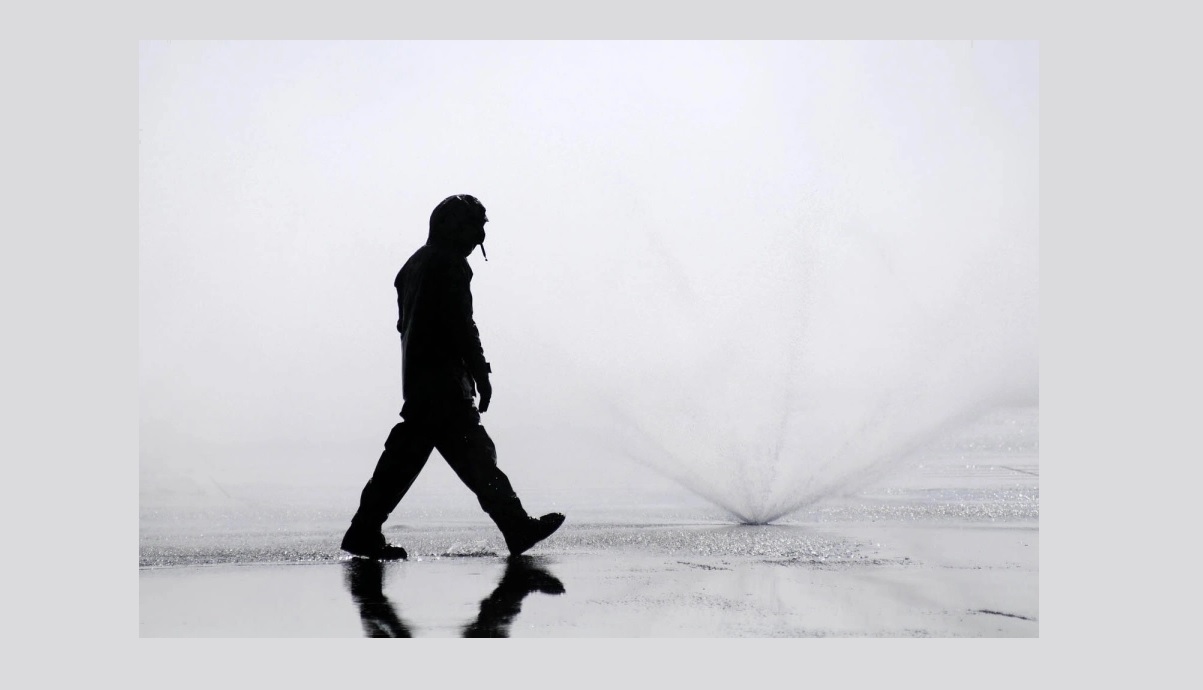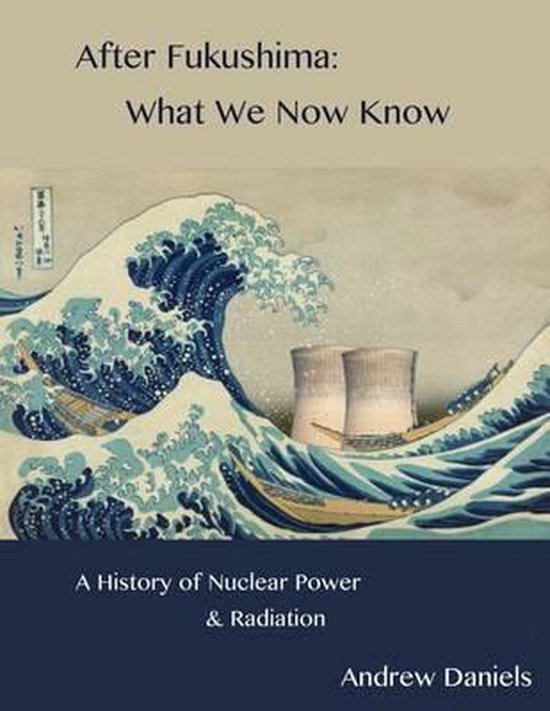Japan responded [to the 2011 Tōhoku earthquake] by closing its nuclear plants – a foolish move that has required the country to spend USD 40 billion per year on liquefied natural gas plus billions more for coal, which has created huge amounts of greenhouse gases. Another USD 11 billion per year has been spent to maintain their perfectly functional-but-idle reactors.
Nuclear power has been tarred by the Fukushima Daichi disaster, but the failure was NOT the fault of nuclear power. It was caused by repeated corporate lying, record falsifying and penny-pinching, by the lack of government enforcement of seawall height, by building too low to the ocean, and by installing backup generators in easily flooded basements.
Blaming nuclear power for Fukushima is like blaming the train when an engineer derails it by taking a turn at 70 mph that is posted for 30. (The Japanese Diet has stated that the Fukushima accident was not the fault of “nuclear power.”)
Blaming nuclear power for Fukushima is like blaming the train when an engineer derails it by taking a turn at 70 mph that is posted for 30. (The Japanese Diet has stated that the Fukushima accident was not the fault of “nuclear power.”)
In 2015, the usually reliable Amy Goodman [Democracy Now!] reported that a class action suit had been filed by several sailors who had served on the USS REAGAN. In her article, she described their symptoms, which they blamed on being exposed to radiation, but she failed to provide any depth.
A few days later, Goodman’s article was read by Captain Reid Tanaka, a United States Navy professional with considerable expertise in nuclear matters who had been intimately involved during the meltdown – and Captain Tanaka presented a very different view:
“I was in Japan, in the Navy, when the tsunami struck and because of my nuclear training, I was called to assist in the reactor accident response and served as a key adviser to the US military forces commander and the US Ambassador to Japan. I spent a year in Tokyo with the US NRC-led team to assist TEPCO and the Japanese Government in battling through the casualty.
“My command (CTF 70) was the direct reporting command for the REAGAN (where we had control over REAGAN’S assignments and missions) and were in direct decision-making with REAGAN’S Commanding Officer and team. I don’t qualify to be called an “expert” in reactor accidents…, but I am well informed enough to know where my limits are and to see through much of the distortions on this issue….
“A Google search will tend to drive people to alarmist websites and non-technical news reports, but you could also find the dull, technical (yet truthful) places such as the IAEA or DOE…
“Numerous bodies of experts have weighed in and provided assessments and reports. A couple are quite critical of TEPCO and the Japanese nuclear industry and regulators.

“… the biggest problem the public has is … being able to distinguish the science-based, objective reports from the alarmist and emotionally charged positions that get the attention of the press, some of whom are self- proclaimed experts in some fields but NOT nuclear power: Dr. David Suzuki and Dr. Michio Kaku. Neither understand spent fuel, nor the condition of spent fuel pools….
“Dr. Suzuki is an award-winning scientist and a champion for the environment, but he is lacking any real understanding of spent fuel or radioactivity. “Bye-bye Japan?’ A headline grabbing sound-bite, but the math just doesn’t work…
“[Sometimes] the true experts cannot give a simple answer because there isn’t one, while those who have no science to back their claims have no compunction in saying the sky is falling and everyone else is lying.
“For the Navy, the contamination caused by Fukushima created a huge amount of extra work and costs for decontaminating the ships and our aircraft to ‘zero’, but [there was] no risk to the health of our people.
“REAGAN was about 100 miles from Fukushima when the radiation alarms first alerted us to the Fukushima accident. Navy nuclear ships have low-level radiation alarms to alert us of a potential problem with our onboard reactors. So, when the airborne alarms were received, we were quite surprised and concerned. The levels of contamination were small, but they caused a great deal of additional evaluation and work. REAGAN’s movements were planned and made to avoid additional fallout. Sailors who believe they were within five miles or so, were misinformed. Japanese ships were close; the REAGAN was not….
“There are former sailors who are engaged in a class-action suit against TEPCO for radiation sickness they are suffering for the exposure they received from Operation Tomodachi. The lead plaintiffs were originally sailors from REAGAN but now have expanded to a few other sailors from other ships. Looking at the claims, I have no doubt some of the SAILORS have some ailments, but without any real supporting information (I haven’t seen ANY credible information to that end), I do not believe any of their ailments can be attributable to radiation—fear and stress related, perhaps, but not radiation directly. Radiation sickness occurs within a ‘minutes/hours’ time frame of exposure and cancer occurs in a ‘years’ time frame. These sailors were not sick in either of these windows. I believe that many of them believe it, but I also believe most are being misled.”
Why Operation Tomodachi worked like clockwork
May, 2020, – U S Court Rejects Sailors’ Lawsuit
The closure of Japan’s nuclear plants and its increased use of imported liquefied natural gas put an end to Japan’s long-standing trade surplus. But in 2015, bowing to financial realities and because of diminishing fear, Japan restarted the second of its reactors. As of May, 2018, seven reactors had been restarted, with many scheduled to follow.
Shortly thereafter, the U. S. media and many of the “Green” organizations began to report that a Fukushima worker had been “awarded compensation and official acknowledgment that his cancer [leukemia] was caused by working in the reactor disaster zone.” That’s wrong, and competent journalists who do adequate research should know it. Here are the facts:
The worker received a workman’s comp benefit package because he satisfied the statutory criteria stipulated in the 1976 Industrial Accident Compensation Insurance Act, which says that workers who are injured or become ill while working or while commuting to and from work, can receive financial aid and medical coverage. The worker spent 14 months at F. Daiichi. (October, 2012 to December 2013.)
In late December 2013, the worker felt too ill to work, so he went to a doctor, and was diagnosed with acute leukaemia in January, 2014. No link was made between his occupational exposure and his cancer. In addition, because the latency period between radiation exposure and the onset of leukaemia is 5 to 7 years, the worker did not get cancer from working at Fukushima. It was, in fact, a pre-existing condition that was exploited by opponents of nuclear power who routinely repeat convenient-but-wrong stories because being honest and accurate takes time, knowledge and integrity.
In 2016, anti-nuclear zealots began to fear-monger about the effects of Cesium-134 on fish while ignoring reports from NOAA and the Japanese government that stated, “Radioactive Cesium in fish caught near Fukushima Daiichi continues to dwindle. Of the more than 70 specimens taken in October, only five showed any Caesium isotope 134, the ‘fingerprint’ for Fukushima Daiichi contamination. The highest Cs-134 concentration was [associated] with a Banded Dogfish, at 8.3 Becquerels per kilogram. Half of the sampled fish had detectable levels of Cs-137, but all were well below Japan’s limit of 100 Bq/kg….”
These amounts are tiny, and the particles emitted from the Potassium-40, which we all contain, are more potent than the Caesium-137 emissions that many greens apparently fear.
There is 500,000 times more natural radiation in the ocean than the amount added by Fukushima.
Regarding the risk from remaining reactor material that many greens agonize over, Dr. Alex Cannara subsequently wrote,
“As of late 2013, the spent fuel at Fukushima was 30 months old. That means that the rods and the fuel pellets within them are able to be stored in air. If any rods had never been in a reactor core, they have no fission products in them and are perfectly safe to take apart by hand.
“So, what do we have at Fukushima? We have some melted core materials (corium), which can be entombed. We have water containing a small amount of fission products like Cesium. And, we have a bunch of fuel assemblies that are very radioactive because of their internal creation of fission products when they were in their reactor cores. (No fission products are created when rods are out of cores, in pools or dry air storage.)
“Since the rods are at least 30 months out of fission-product production [2013], one can see how quickly they’ve lost the need for cooling and the reduction in their radioactivity.
“Nuclear power has for its entire life, been the safest form of power generation. The EPA estimates that we lose more than 12,000 Americans every year to coal emissions. The Chinese lose 700,000, and the Indians, 100,000. To delay building nuclear power plants will cause diseases and deaths that could easily be avoided.”
Nuclear power is the safest way to generate electricity.
World Health Organisation
“A nuclear power plant that melts down is less dangerous than a fossil fuel plant that is working correctly. [Because of their toxic ashes and emissions.] Fukushima illustrates that even a meltdown that penetrates containment is very little danger to the public when a few basic precautions are taken.” Andrew Daniels, author, “After Fukushima What We Now Know”.
A nuclear power plant that melts down is less dangerous than a fossil fuel plant that is working correctly.
Andrew Daniels
How Fukushima Made Me a Nukie, Eric Schmitz on March 28th, 2017
“Not 1 in 10,000 people have any concept of the huge amount of 24/7, low-carbon electricity a nuclear power plant can deliver compared to the intermittent dribble provided by the renewables.”
Colin Megson
Every year, U.S., nuclear-generated electricity prevents more than 500 million tons of carbon dioxide from entering our atmosphere – Wall Street Journal
Only Nuclear Energy Can Save the Planet, Wall Street Journal, Joshua S. Goldstein and Staffan A. Qvist Jan. 11, 2019
Is nuclear energy the key to saving the planet?, High Country News, about Emma Redfoot by Jonathan Thompson
Nuclear Power in a Clean Energy System, IEA, Fuel Report, May 2019
5 Things Everyone Should Know About Nuclear, David de Caires Watson, Dec 11, 2019
Coming up next week, Episode 15 – Clean Air and Water? Not with Fossil Fuels Around – Death by Fossil
Links and References
1. Next Episode 15 – Clean Air and Water? Not With Fossil Fuels Around – Death by Fossil
2. Previous Episode – Episode 13 – What’s so Great about Nuclear Power?
3. Launching the Unintended Consequences Series
4. Dr. George Erickson on LinkedIn
5. Dr. George Erickson’s Website, Tundracub.com
6. The full pdf version of Unintended Consequences
7. https://en.wikipedia.org/wiki/2011_T%C5%8Dhoku_earthquake_and_tsunami
8. https://en.wikipedia.org/wiki/Amy_Goodman
9. https://www.democracynow.org/
10. https://en.wikipedia.org/wiki/USS_Ronald_Reagan
11. https://thebreakthrough.org/issues/energy/uss-reagan-sailors-lawsuit-found-lacking
12. https://www.forbes.com/sites/jamesconca/2020/05/28/american-sailors-lawsuit-against-japanese-over-fukushima-radiation-rejected-by-us-appeals-court/
13. https://www.linkedin.com/in/reid-tanaka-b212751b/
14. https://www.nvcfoundation.org/newsletter/2008/3/captain-tanaka–first-japanese-american-commander-of-a-navy-submarine-base/
15. https://www.vice.com/en/article/gq8gbm/these-nuclear-physicists-think-david-suzuki-is-exaggerating-about-fukushima
16. https://en.wikipedia.org/wiki/David_Suzuki
17. https://www.nippon.com/en/japan-data/h00967/
18. http://www.noaa.gov/
19. https://www.linkedin.com/in/alex-cannara-6a1b7a3/
20. https://www.asahi.com/ajw/articles/14245903
21. https://twitter.com/After_Fukushima
22. https://www.instagram.com/andrewsdaniels/
23. https://www.amazon.com/After-Fukushima-History-Nuclear-Radiation-ebook/dp/B01LC8489M
24. https://nuclearprogress.org/how-fukushima-made-me-a-nukie/
25. https://mobile.twitter.com/moonbatnukie
26. https://www.youtube.com/watch?v=ocBGxMnpQ9g
27. https://www.facebook.com/cwm66
28. https://www.wsj.com/articles/only-nuclear-energy-can-save-the-planet-11547225861
29. https://www.hcn.org/issues/50.21/nuclear-energy-a-new-generation-of-environmentalists-is-learning-to-stop-worrying-and-love-nuclear-power
30. https://www.iea.org/reports/nuclear-power-in-a-clean-energy-system
31. https://medium.com/generation-atomic/5-things-everyone-should-know-about-nuclear-64e73ff27c98
32. https://www.linkedin.com/in/josh-goldstein-0ab013204/
33. https://www.linkedin.com/in/staffanq/
34. https://www.linkedin.com/in/emma-redfoot-4121685b/
35. https://twitter.com/EmmaRedfoot
36. https://www.titansofnuclear.com/experts/EmmaRedfoot
37. https://www.hcn.org/voices/jonathan-thompson
38. https://twitter.com/jonnypeace
39. https://www.linkedin.com/in/davidjohnwatson/
40. https://twitter.com/ecopragmatist
41. http://www.sarahcraigmedia.com/
#UnintendedConsequences #GeorgeErickson #FissionEnergy #NuclearEnergy #Fukushima #airpollution #USSReagan #OperationTomodachi









2 Replies to “Episode 14 – What’s up Doc? Tremors from Fukushima – Unintended Consequences – Chapter 6 Part 2”